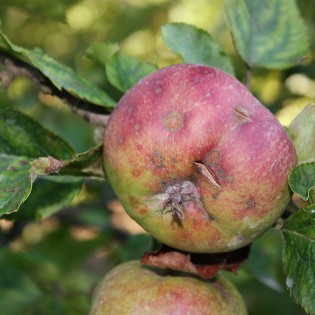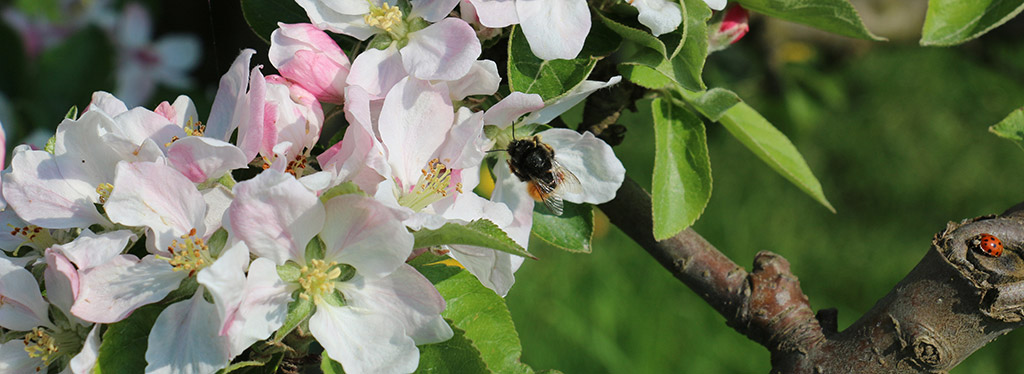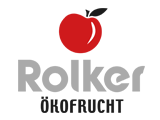
The ascomycete fungus that causes apple scab is the biggest challenge for organic orchardists in northern Germany. In spring time you sometimes find last year’s dead, dry leaves under the fruit trees. Clusters of the fungus survive the winter on these leaves and with increasing humidity and warmth the spores shoot out and the wind carries them on to the young, green parts of apple and pear trees in the vicinity. If it stays humid and warm, the fungus grows roots into the new leaves and further spread on them. The rampant fungus first only damages the leaves, but spreads all over the tree and later affects the fruit. The tree growth is hindered and the fruit remains small and covered with black dots. The fungus infection is comparable with a common cold that, if left untreated, can lead to serious pneumonia.
Timely intervention is the only alternative. The fungus must be tackled, but the ways and means are the tricky bit. The orchardist must prevent the spores from germinating and growing on the young leaves in spring, so they are safe from the fungus later in the year too. The risk of leaf fungus infection and growth increases with rising temperatures and longer periods of humidity. Meteorological information helps identify infectious conditions and computerised forecasting models can assist in predicting them. Using this in combination with natural substances the organic orchardist has the tools to prevent the fungus infection and keep his fruit trees healthy.




